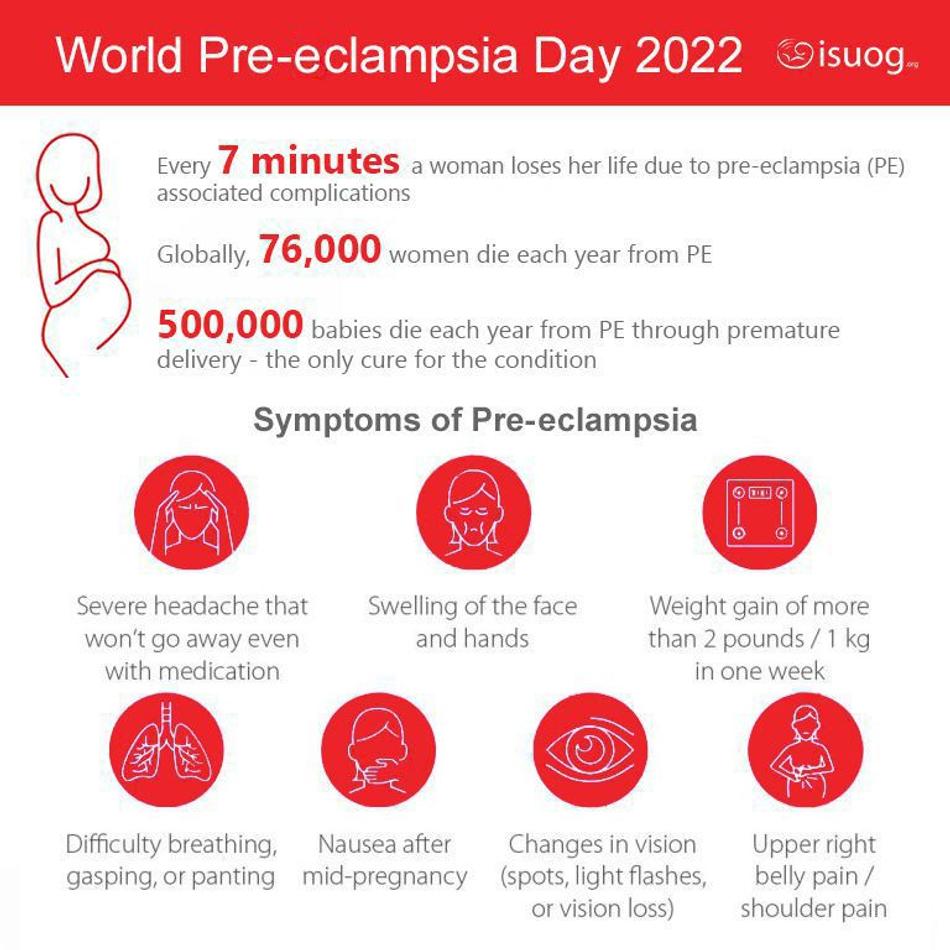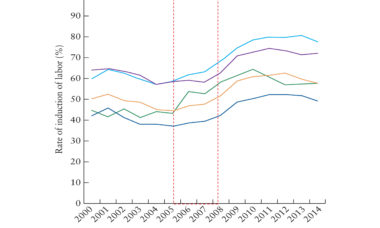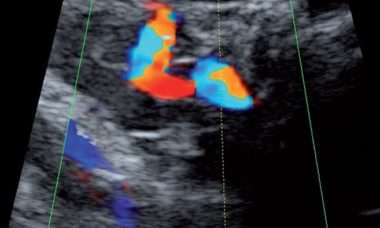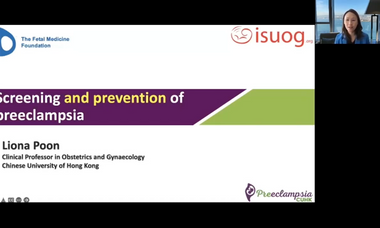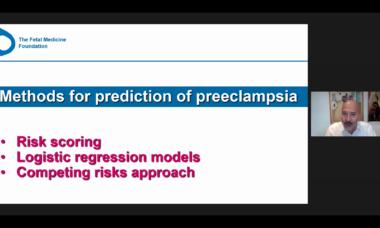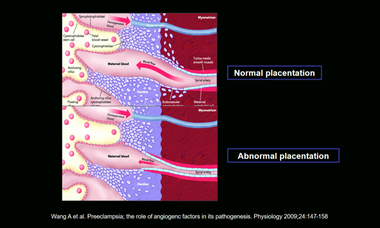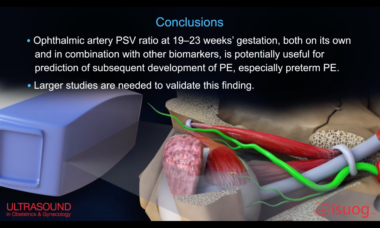Pre-eclampsia (PE) is condition that affects 2–5% of pregnant women, and as high as 8–12% in some countries in Africa, with 76,000 women globally losing their life to PE every year.
In light of May's World Pre-eclampsia Day, ISUOG has compiled a collection of resources from our community's expert clinicians including, screening for PE, the best strategy for managing hypertension and PE at end of pregnancy, and risk assessment for PE.
Read, Watch and Learn
Read
Read papers and articles written by expert clinicians from the immediate and wider ISUOG community for our UOG Journal, bank of educational resources and community outreach.
Role of placental, fetal and maternal cardiovascular markers in predicting adverse outcome in women with suspected or confirmed pre-eclampsia
The sFlt-1/PlGF ratio performs well in predicting adverse perinatal outcomes but not adverse maternal outcomes in women with suspected or diagnosed preeclampsia.
Pre-eclampsia screening method found superior to current tests in a new UOG study
New research highlights a more accurate way to screen for pre-eclampsia in pregnant women than currently recommended methods. Published online in Ultrasound in Obstetrics & Gynecology, the study challenges the UK’s current guidelines on the management of hypertensive disorders during pregnancy.
STATIN trial: predictive performance of competing-risks model in screening for pre-eclampsia at 35–37 weeks' gestation
Recent UOG Journal study by Prof Kypros Nicolaides et al. validated an effective and reproducible method for third-trimester prediction of term pre-eclampsia.
Best strategy for managing hypertension and pre-eclampsia at end of pregnancy
In 2009, the Hypertension and Pre-eclampsia Intervention Trial At near Term-I (HYPITAT- I) trial showed that inducing labor in women with gestational hypertension or pre-eclampsia at the end of pregnancy reduces the number of high risk situations for the mother, without compromising the health of newborns. A new analysis evaluated the impact of the HYPITAT-I findings on timing of labor and subsequent outcomes for mother and child in the Netherlands.
UOG Journal Virtual Issue: pre-eclampsia
Included in the Virtual Issue are studies on topics such as screening for pre-eclampsia in the three trimesters of pregnancy, aspirin for prevention of pre-eclampsia, and maternal cardiovascular function in affected pregnancies.
Watch
Watch ISUOG expert clinicians Prof. Nicolaides and Prof. Liona Poon answer the questions surrounding pre-eclampsia that matter most to our community's patients in our Ask the Expert: Pre-eclampsia Patient Perspectives series:
Ask the Expert: Pre-eclampsia Patient Perspectives
Watch videos on endometriosis produced from ISUOG's World Congresses, International Symposia and special events, with expert speakers and guest lecturers in the field of obstetrics and gynecology.
Screening for pre-eclampsia
Prof. Liona Poon delivers her lecture on 'Screening for Pre-eclampsia' as part of April 2022's Ultrasound Essentials event.
Risk assessment for pre-eclampsia
2020 ISUOG World Congress plenary lecture from Prof. Kypros Nicolaides on risk assessment for pre-eclampsia
Early and late pre-eclampsia
This lecture was delivered at ISUOG's World Congress in Singapore, in 2018, by Prof. Edgar Hernandez- Andrade.
UOG video abstract: Ophthalmic artery Doppler in combination with other biomarkers in prediction of pre-eclampsia at 19–23 weeks’ gestation
New UOG Journal video abstract on ophthalmic artery Doppler in combination with other biomarkers in the prediction of pre‐eclampsia at 19–23 weeks' gestation, by Sapantzoglou and colleagues.
Learn
Learn from our Practice Guidelines on 'Role of ultrasound in screening for and follow-up of pre-eclampsia'. Already a member? Earn credit with the associated CME Activity.
